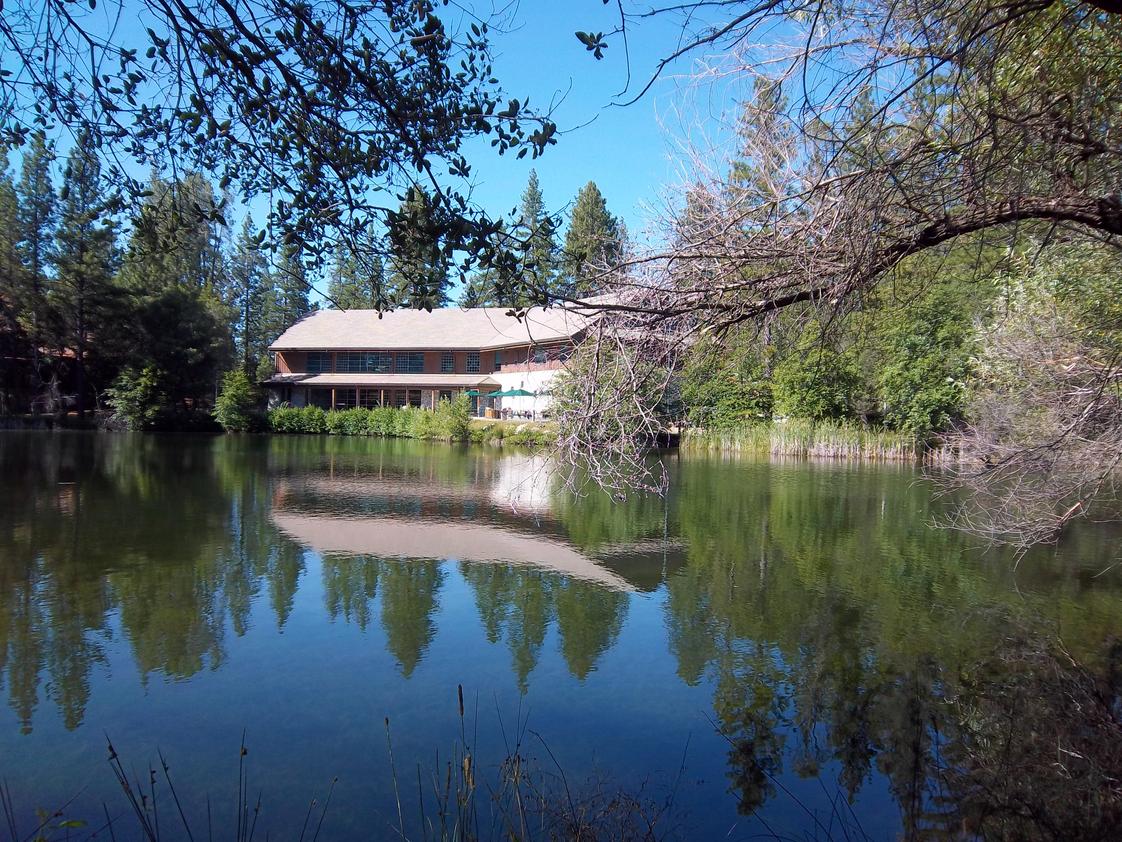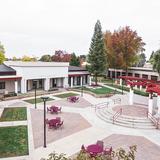- Consistent with the mission of the California Community Colleges and the Yosemite Community College District, Columbia College is committed to offering a comprehensive range of transfer, vocational, cultural, and community education, and to facilitating community and economic development. The College provides educational programs and support services to assist students and the broader community in gaining access to higher education and achieving success in their chosen endeavors.
School Highlights
Columbia College serves 3,611 students (19% of students are full-time).
The college's student:teacher ratio of 21:1 is lower than the state community college average of 32:1.
Minority enrollment is 34% of the student body (majority Hispanic), which is less than the state average of 77%.
Quick Stats (2025)
- Enrollment: 3,611 students
- In-state tuition: $1,150
- Out-state tuition: $6,406
- Student:teacher ratio: 21:1
- Minority enrollment: 34%
- Source: Integrated Postsecondary Education Data System (IPEDS)
School Overview
The teacher population of 169 teachers has stayed relatively flat over five years.
Columbia College
(CA) Community College Avg.
Carnegie Classification
Associate's Colleges: High Transfer-High Traditional
Baccalaureate/Associate's Colleges: Associate's Dominant
Institution Level
At least 2 but less than 4 years
At least 2 but less than 4 years
Institution Control
Public
Public
Total Faculty
169 staff
294 staff
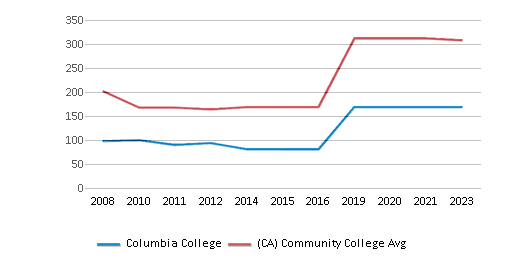
School Calendar
Student Body
The student population of Columbia College has grown by 38% over five years.
The student:teacher ratio of 21:1 has increased from 13:1 over five years.
The Columbia College diversity score of 0.51 is less than the state average of 0.70. The school's diversity has grown by 6% over five years.
Total Enrollment
3,611 students
2,311 students
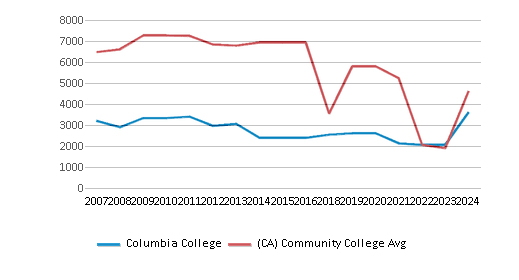
Student : Teacher Ratio
21:1
32:1
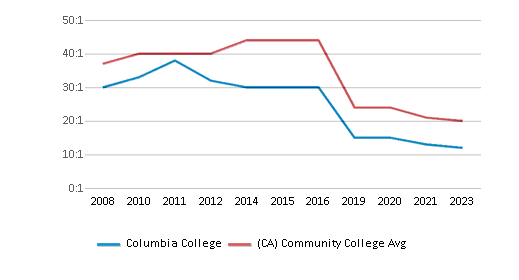
# Full-Time Students
690 students
1,232 students
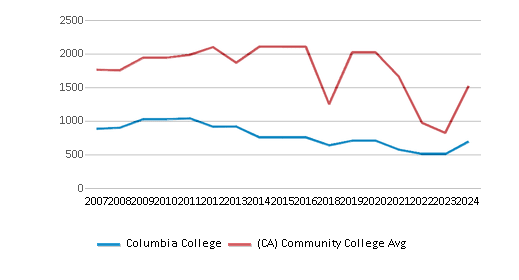
# Part-Time Students
2,921 students
8,299 students
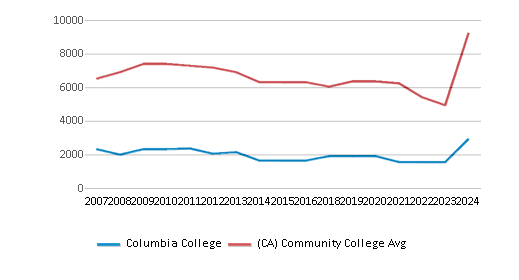
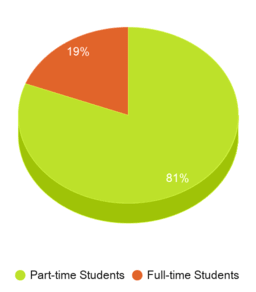
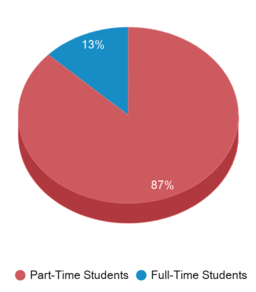
# Enrollment Undergraduate
361 students
240 students
# Full-Time Undergraduate Students
690 students
1,155 students
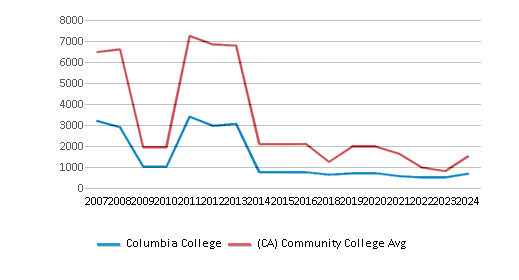
# Full-Time Graduate Students
n/a
63 students
# Part-Time Undergraduate Students
2,921 students
8,457 students
# Part-Time Graduate Students
n/a
10 students
Total Dormitory Capacity
n/a
140 students
% American Indian/Alaskan
2%
n/a
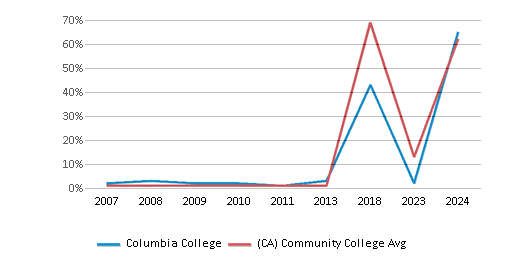
% Asian
2%
13%
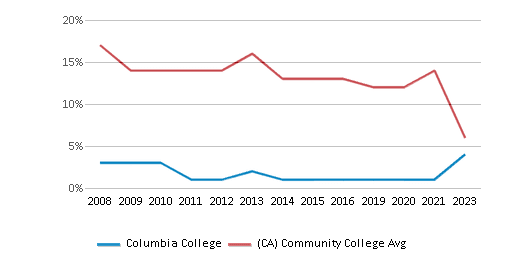
% Hispanic
23%
47%
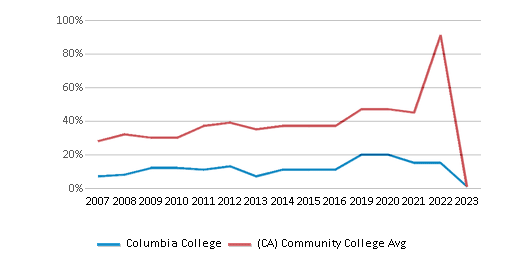
% Black
4%
7%
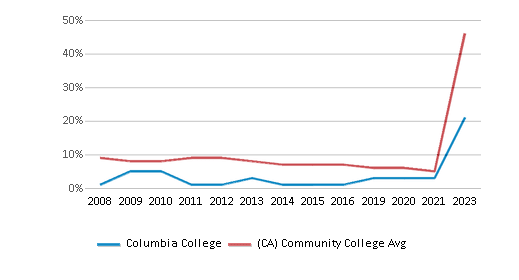
% White
66%
23%
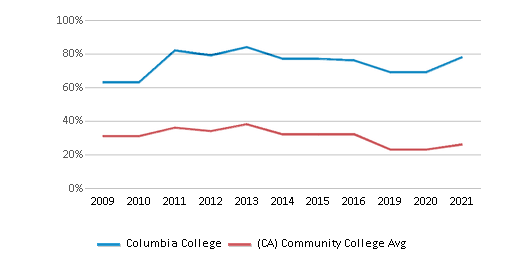
% Hawaiian
n/a
1%
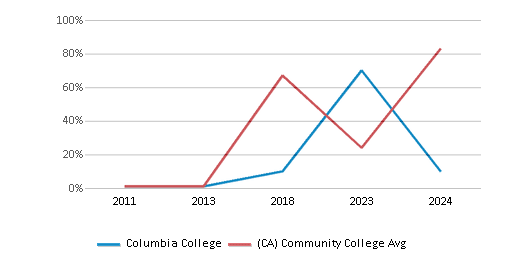
% Two or more races
n/a
5%
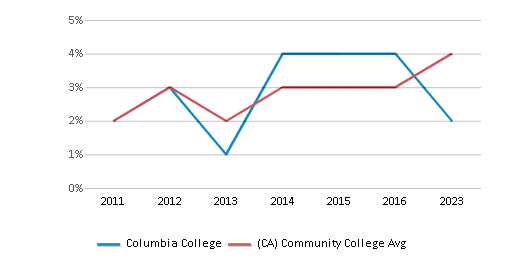
% Non Resident races
n/a
1%
% Unknown races
1%
3%
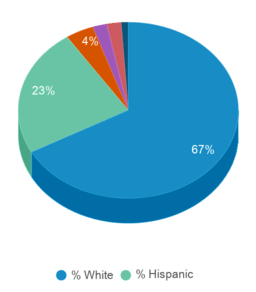
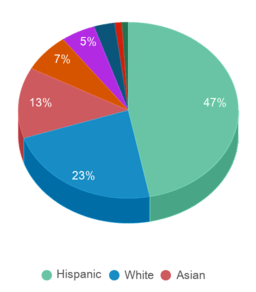
Diversity Score
0.51
0.70
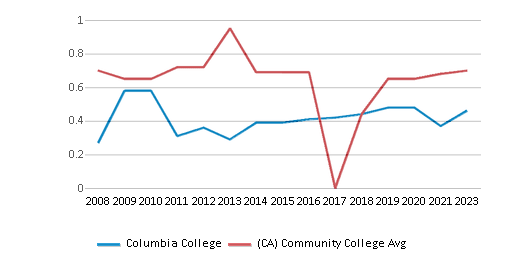
College Completion Rate (Students who graduate in less than 4 years)
0.2732%
0.4221%
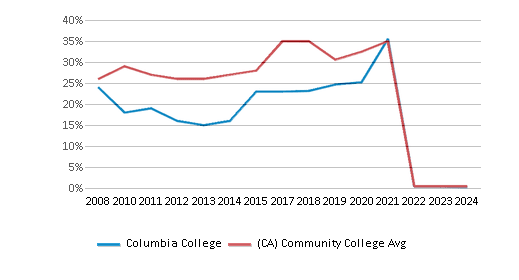
College Completion Rate (Students who graduate in 4 years or more than 4 years)
n/a
0.4304%
Average Graduate Earnings (10 Years)
$30,300
$34,700
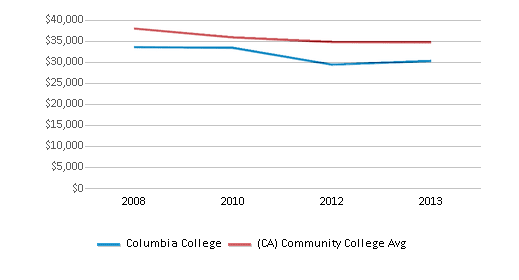
Tuition and Acceptance Rate
The public in-state tuition of $1,150 is less than the state average of $1,236. The in-state tuition has declined by 9% over four years.
The public out-state tuition of $6,406 is less than the state average of $6,547. The out-state tuition has declined by 15% over four years.
In-State Tuition Fees
$1,150
$1,236
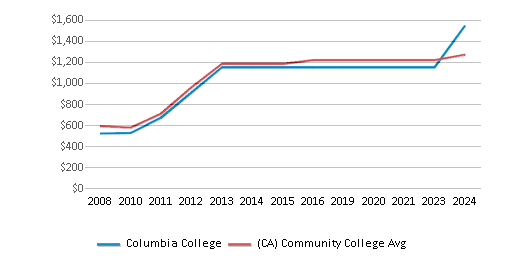
Out-State Tuition Fees
$6,406
$6,547
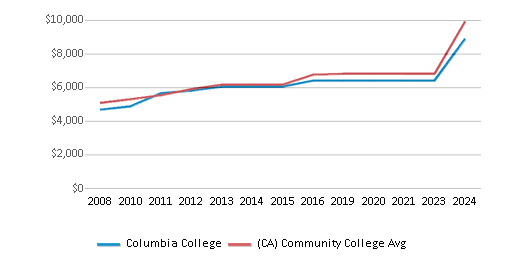
% Students Receiving Some Financial Aid
68%
85%
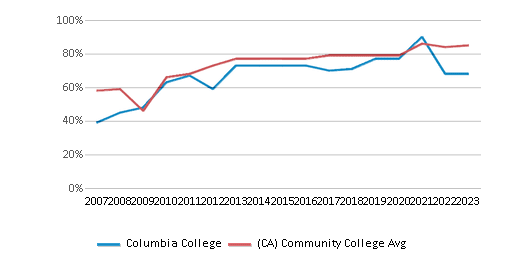
Median Debt for Graduates
n/a
$10,500
Median Debt for Dropouts
n/a
$6,239
Acceptance Rate
n/a
92%
Source: 2024 (or latest year available) Integrated Postsecondary Education Data System (IPEDS) , School Administrators
School Notes
- Located on 280 acres of forestland in California's historic Mother Lode, our college campus surrounds a peaceful 4½ acre lake and has been described as one of the state's most beautiful community colleges. The College actively promotes transformational learning through critical and creative thinking that is open to change and personal growth; civic, environmental, and global awareness and engagement; and individual and collective responsibility. At the heart of our mission is a desire to develop a zest for lifelong learning throughout the community, with the College serving as its educational and cultural center. Columbia College is fully accredited by the Accrediting Commission for Community and Junior Colleges of the Western Association of Schools and Colleges. The Career Center, located within the Manzanita Building adjacent to the Counseling area, offers materials and services to assist students with career information. The Center maintains a variety of resources including occupational publications, newsletters, college catalogs, and Eureka, a computerized vocational/educational information system. The Columbia College professional counseling staff provide essential academic advising, career counseling and life planning activities to continuing, new and returning students in order to enhance each students educational experience at Columbia.
Frequently Asked Questions
How much does Columbia College cost?
Columbia College's tuition is approximately $1,150 for In-State students and $6,406 for Out-State students.
Recent Articles
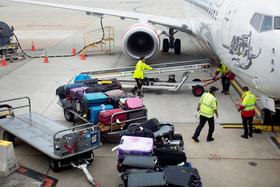
Unlocking Airport Career Opportunities: Your Guide to Ground Jobs
Discover the diverse range of ground jobs at mid-size U.S. airports, their educational requirements, and how community colleges can prepare you for these exciting careers.

Careers: Dental Hygienist, Medical Lab Technician & More Healthcare Positions
Considering the healthcare field? Your community college can equip you for any number of healthcare positions, including Dental Hygienist, Medical Lab Technician, and more.

How To Craft the Perfect College Admissions Essay
Read on to learn the ins and outs of crafting the perfect college application essay.

